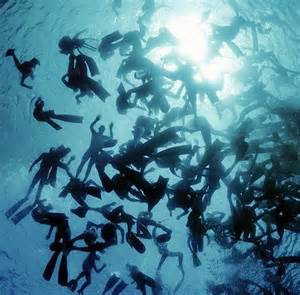When my wife and I moved
to the Orlando area in 2010 there was one thing we didn't like about our condo
-- cats. We had a small feral cat colony near us that had free rein of the
complex grounds at night. They fought at night and the wails would frequently
wake us even with the windows closed. And feral cats take a toll on the local
small animal population. Small mammals, reptiles, and birds are all on the
menu. Even well fed cats still have the biological imperative to hunt and kill.
But over time the cats
disappeared. Not all at once but gradually the feral cats that regularly hid in
the woods near our house were no more. By 2013 we never saw feral cats.
 |
| Debary Coyotes |
I thought about that
when I read this piece about
coyotes in DeBary, FL. At the time I didn't realize that the disappearance of
cats in my neighborhood coincided with an increase in the number of coyotes.
But coyotes numbers are still increasing throughout Florida.
Coyotes don't only prey
on cats for food. They also kill them as a way of reducing competition. This is
called intraguild predation. Most predators will attack a slightly smaller
predator because it helps keep the number of prey animals high.
 |
| Fluffy and Tasty |
My neighborhood wasn't
the only place this was happening. Here's a story from Pinellas
County about coyotes moving into a neighborhood. A feral cat colony there
completely disappeared after the coyotes showed up. They've also been tough on
housecats that occasionally roam outside.
The adverse impacts of cats in Florida are best documented for threatened and endangered species, especially endangered or already extinct subspecies of beach mice and cotton mice and the endangered Lower Keys marsh rabbit. However, predation by cats also has been documented for the Florida scrub-jay and for shorebirds, terns, and other ground-nesting species of birds, as well as for sea turtles.
Of course, this was
written all the way back in 2003. That was a time when spotting a coyote in
Florida was a memorable event.
The probable impact of
the increase of the number of coyotes and the reduction in feral and owned
outside cats differ by prey species. Small birds and mammals that live near
people will probably see less of a predator threat as outside cats become a
thing of the past. Larger animals that rarely see themselves under threat from
cats will probably be more threatened as the number of coyotes increase. In
particular the number of sea turtle nests destroyed by coyotes is now
far above any threat they had from cats.
Now the FFWC says that
the coyote is a naturalized species. They're here to stay and
the FFWC won't take steps to eradicate them in Florida. So doing things like
making sure your cat or small dog never goes out alone is something you have to
do now. Feeding stray cats only brings them together so they're easier for
coyotes to kill.
So I'll end with a small
clip of video that I shot in about a year ago. I was standing beside a trail
under a tree when a coyote started toward me. I could tell he couldn't see me
clearly because I was partially hidden under the tree. Coyotes don't have
particularly good eyesight. They depend on a keen sense of hearing and smell
and you can tell exactly when he caught my scent.
































